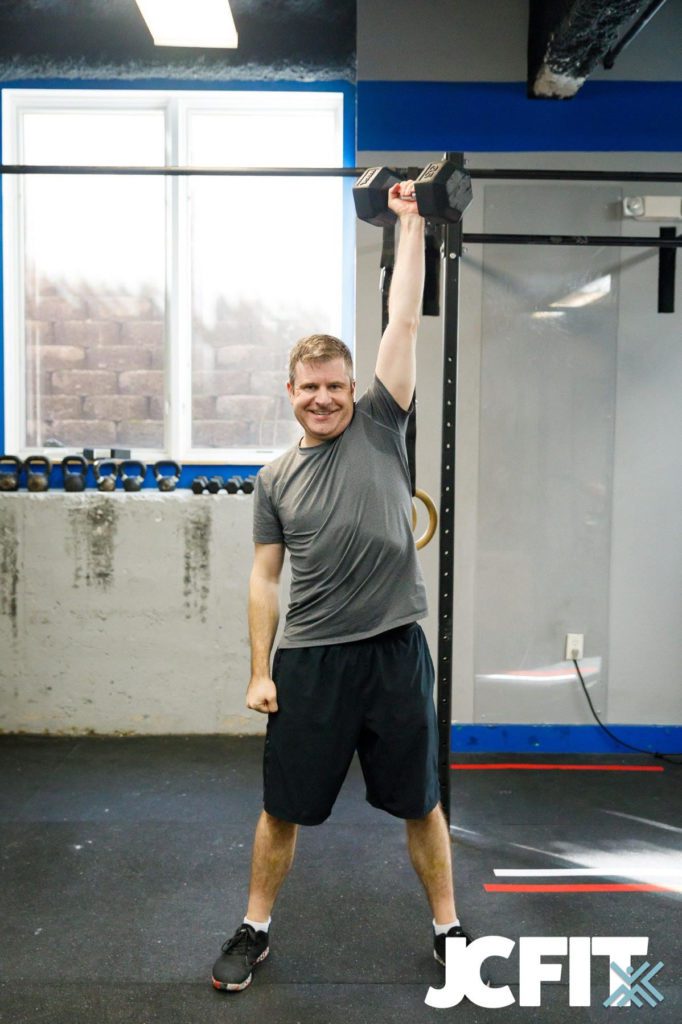Can you remember the last time that you chased a new goal? Maybe it was a heavy weight PR, a faster race time, or even that elusive bar muscle up. Maybe the goal was outside of gym life altogether, and something personal or professional. What helped you reach it? What motivated you to keep powering through, even when the goal seemed out-of-reach, tough, or just not as interesting anymore?
Here at JCFit, our last three weeks have been an excellent blueprint for seeing where we are in terms of some of our fitness goals as we’ve completed this most recent round of Level Method testing. If you listened carefully, you could hear the sounds of people everywhere Leveling Up as they tested their current levels of fitness. These last three weeks have also been a catalyst for setting new goals? So, what’s next? How do we make sure that we’re successful and we don’t just “set it and forget it?” The answer is simple: We set realistic goals and we tap into our “Why.”
Keep Your Goals SMART
Setting a new goal –– this can be any type of goal, fitness or otherwise –– is the easy part. It’s the part of the process where we are often super motivated and excited by all of the possible outcomes that we are hoping to achieve. We are pumped by that end result we’re chasing, that is waiting for us at the very end of the road.
However, picking your goal is the easy part. It is the follow-through that tends to get us: Life happens (funny how that works), some days go perfectly as planned, and others couldn’t go more off route. Sometimes the bump in the road is just that, a bump. Other days, the bump in the road is a whole journey that lasts longer than expected, and well, either way, it’s easy to see how a new goal that we were once so excited about can easily be shifted to the back-burner or ditched altogether. See where that “set it and forget it” mentality comes in?
Research dating back as early as 1981 will tell you that successful goal implementation relies on SMART goals. These are goals that are:
S – Specific (I want to deadlift 300 lbs)
M – Measurable (I will grow my 1 rep max deadlift to hit 300 lbs with proper form. My coach will assess)
A – Achievable (I can do this by going to a gym that provides coaching on weightlifting techniques and has equipment for me to use)
R – Relevant (This specific goal fits in with my overall goal of becoming stronger and more fit)
T – Timebound (I plan to achieve this goal within 6 months)
SMART goals are an excellent framework to start, but let’s dig a little deeper.

Setting Realistic Goals:
Setting a lofty goal (sometimes referred to as moonshot goals) can be exciting and scary. However, your success all starts with goal setting. Setting realistic goals not only makes it easier to succeed, it also helps sustain excitement and motivation from the beginning of the journey to the very end. There are two types of goals that take us to that metaphorical finish line:
Outcome goals are specific and measurable goals that live in a quantitative land (think numbers). These are usually long-term goals. An example of an outcome goal is, “I want to power clean 130 lbs by March 01” or “I want to be able to do a kipping pull-up by the next CrossFit Open.” These goals are black and white, and there is no ambiguity whether or not you meet your goal. You either achieve it, or you don’t. The power of outcome goals are their specificity and their measurability: “I want to achieve this, by this end date.” It is a clear cut goal to strive for. But, outcome goals can be tricky.
For example, imagine setting a fitness goal that you hope to achieve 3 months from now. Let’s use that deadlift goal from earlier. Now, take a second and think of all the tiny wins you might have trying to hit that 300 lb lift. Better form! Getting stronger! Feeling more comfortable with a barbell! But, what happens at the end of these six weeks if, despite all these other breakthroughs, you don’t hit your very specific outcome goal of “I want X in Y time frame?” Does that mean it wasn’t a success? Absolutely not. Let’s repeat that a little louder in bold: Absolutely not. That is where our next type of goal comes in.
Process goals are short-term goals, and they are less ‘all or nothing’, and live in qualitative land. These are those tiny breakthroughs that we are so quick to dismiss because they aren’t that long term big outcome goal. They’re all about the experiences we encounter throughout our journey towards our outcome goals. And because we know this is a long road, these are the goals that will keep you hyped throughout the course of any program you choose to tackle. Having these process goals in mind keeps those rose-tinted glasses on, and they make the journey a lot more fun.
So, what type of goals should we be setting here? The answer is both. Outcome goals are “finish line goals.” What do you hope to achieve in your timeframe? This should be measurable and specific, and it should be in the realm of possibility. And process goals are those goals that keep us moving forward when we get overwhelmed, lost, or feel like our long term goals are too ambitious or seemingly impossible. OR, when life gets in the way and we lose steam.

A Note on WHY:
Burnout happens all of the time. It happens with even greater frequency when you are doing something ‘just to do it.’ At the top of any goal, it’s important to take a second and tap into your WHY. Why is this important to you? Once you’ve set your next goal, take a minute to solidify your why, because when in doubt, tapping back into your why (especially on those nothing-goes-as-planned days) brings your attention back to the moment, brings your attention back to what’s important to you, and gives you ownership over what you’re doing.
Setting a new goal can be exciting and scary, friends. It helps to focus on the process, and what we can control: Attitude and effort level. Setting realistic goals and a solid ‘Why’ allows you to keep that initial excitement and motivation in check and will take you one step closer to success!




